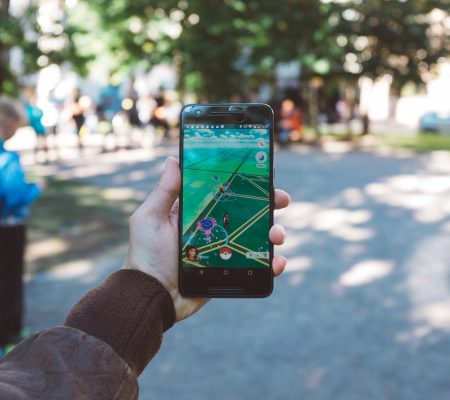By now, you might be getting over the wandering hordes of knee-socked, backpack-strapped, middle-aged adults taking up more than their fair share of the sidewalk in search of Eevees and Rattatas. If you aren’t, chances are good you’re a member of one of those aimless hordes. For all its hype, though, a lot of good has come out of the Pokémon Go craze over the last couple months.
And believe it or not, Pokémon Go has something to teach us about air quality. There are some Pokémon that are good for air quality, and there are others that are bad. While you’re out there hunting, keep an eye out for these little Pokémon:
GOOD for Air Quality
|
|
Oddish This little Pokémon looks cute enough to eat. Local gardens are a great - and fun - way to contribute to positive air quality. Fresh, sustainable food and fewer fossil fuels burned for transporting - sounds like this one’s in the bag, er, ball. |
|
|
Caterpie One day, Caterpie will grow up into one of the many pollinators that make 1 in every 3 bites of food we eat possible. Pollinators are vital to the plants and ecosystems that keep our air clean. |
|
|
Bellsprout Native plants have adapted to thrive in the local environment. Incorporating them into landscaping requires fewer pesticides and less lawn care - which in turn reduces pollutants and the formation of ozone. |
|
|
Bulbasaur Trees and vegetation are vital to keeping our air clean. Among other environmental benefits, they sequester carbon, filter out toxins, and provide shade that keeps us - and the air - cool. |
BAD for Air Quality
| Gastly A.k.a., PM2.5, these nasty little buggers can make their way into lungs where they wreak havoc on immune systems and lead to asthma, COPD, and even cancer. |
| Grimer Grimer can’t wait to get his mucky goop-hands into your water supply. Unfortunately, that could mean many forms of water pollution including eutrophication, algal blooms, and acid rain. |
| Koffing Noxious gases like ozone cause respiratory problems like sore throat, wheezing, and, indeed, lots of coughing. |
| Charmander We know, we know. Charmander is one cutey-patootey, but open burning is bad news for PM2.5 levels. |
Images source: http://www.pokemonpets.com/Pokedex-2
These critters are an adorable reminder of the hows and whys of cleaning up our air, and one that comes at a good time. With 2016 shaping up to be the hottest year on record, we’re going to need to be better equipped than ever to combat ozone and particulate pollution. Our favorite part about Pokémon Go, though? It gets people out and walking.
When you combine work, commute, meals, and evening activities like reading, watching TV, or surfing the web (e.g. reading this article), the average office worker in the U.S. spends 13 hours per day sitting . Add that to the 8 hours you (are supposed to) spend sleeping every night and, statistically speaking, you spend 21 hours sitting, usually slouching, or lying down every day. This ultra-scientifically-dubbed “Sitting Disease” (Morbus sedentarius, if you’re that guy) is a major cause of skyrocketing epidemics of diabetes, heart disease and pancake butt we’re seeing today.
In a world where many of us spend a majority of our time behind a screen, any excuse to get out and move in the real world—even if it means taking a digital one with you—is welcome. You can search for Pokémon on any of Central Indiana’s many greenways, walking paths, and park trails. Walking to and from work is a great way to get those eggs crackin’, so you can stop trying to cheat the system.
And of course, the more you walk, the less you drive. Regular vehicles on the road cause 45% of the pollution that goes on to form ground-level ozone (i.e. the bad kind), so driving less has major positive impacts on the air we all breathe.
Healthy bodies, healthy air. You’ll be happy, the air will be happy, and your neighbor from down the street will be scrambling when he realizes you’ve taken over his gym.
Catch ‘em all! Then catch us at these locations on Thursday, September 22 for International Car Free Day.
- Pacers Bikeshare / IndyGo Stop at Alabama and North Streets along the Indy Cultural Trail
- The Bicycle Green Lane on Pennsylvania Street in front of the Indiana War Memorial
- Virginia Ave and Prospect Street where the Cultural Trail meets the protected bike lane
